How to safeguard your camera gear from theft
How to safeguard your camera gear from theft
A rash of recent robberies in San Francisco and elsewhere are a reminder to be aware and prepared.
By Harry Guinness | Published Apr 20, 2022 6:00 PM
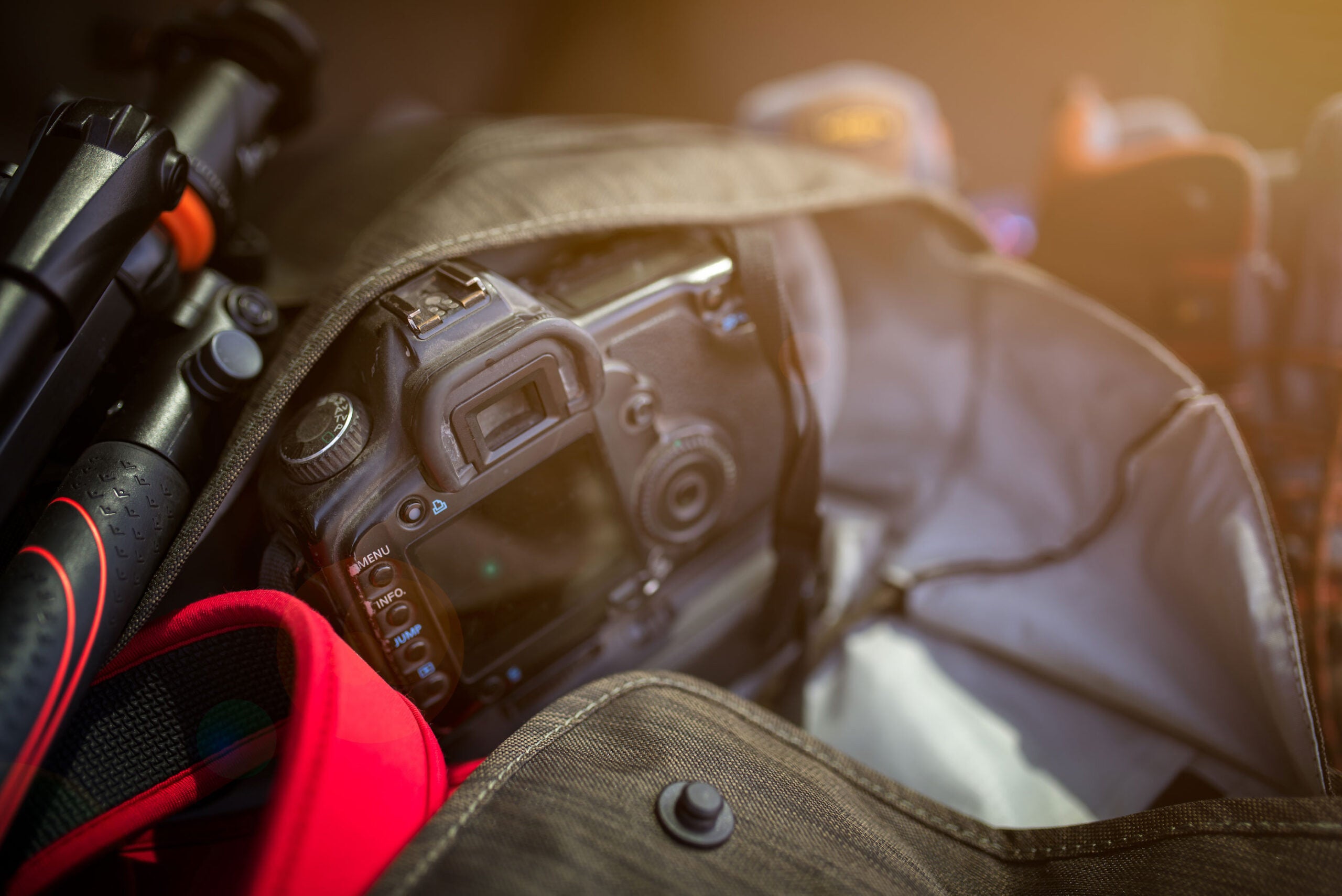
A new report by ABC 7 News in San Francisco has revealed where a lot of stolen electronics—including cameras—are sold. It’s a good reminder that expensive camera gear is very easy for thieves to sell, which makes it such a tempting target. You can check out the full video to see it all in action, but more importantly we’ve gathered up our best advice for safeguarding your kit.
What’s going on in San Francisco?
Whether it’s down to large amounts of media coverage or genuine underlying social issues, San Francisco seems to have an outsized camera theft problem. It’s not that photographers aren’t at risk everywhere, but in San Francisco they seem to be targeted more deliberately.
Here at PopPhoto, we covered a photographer being followed home from the Golden Gate Bridge and robbed at gunpoint just a few months ago. Our colleagues at Petapixel have paid even more attention to the issue, covering the Canadian camera crew that got robbed at gunpoint last month, a San Francisco Chronicle photographer getting robbed (also at gunpoint) while on assignment, and a woman who got shot after refusing to give up her camera gear—all in the last year. One Petapixel contributor even had his camera stolen while it was rolling.
The report from ABC 7 adds an important bit of context to all this. It shows how easy it is for thieves to sell stolen cameras, laptops, and other expensive electronics at the side of the road—sometimes within an hour of the robbery taking place. Sadly, it also shows how little the police are able to do about it. It’s no wonder that photographers, who can easily be carrying thousands of dollars worth of equipment, are such lucrative potential targets.
Your gear is not worth your life
No amount of photography gear is worth losing your life over. As a European, one of the things I find most concerning about all the reports of camera theft from San Francisco is that many involve a gun. Just in the news stories linked above, one person was shot and another had their family members shot at. It’s hard to deny that—particularly in the US—there is a very real risk of getting hurt in a camera gear robbery. If someone does threaten you, hand over your gear and walk away.
Similarly, very few photographs are worth risking your life—or your gear—for. The point of this article isn’t to say “no one should take photographs in San Francisco,” but it’s pretty clear that popular photography spots, like the parks overlooking the Golden Gate Bridge, are riskier environments, and so you should weigh up your options when planning your shots. If something doesn’t feel right, walk away.
How to protect your camera gear
Whether you’re in San Francisco or any other city, there are some simple, sensible steps you can take to lower the risk of getting robbed. I’ve traveled the US, Mexico, Europe, and Southeast Asia with my camera gear without ever having anything stolen.
Be discreet. Don’t advertise you’re a photographer. If you’re in a busy or potentially risky environment, don’t keep your camera out. You might miss a few photos, but you lower your chances of being robbed.
Conceal valuables. Don’t use an obvious camera bag and, where possible, hide other gear like tripods. A normal looking messenger bag—I use the Peak Design Everyday Messenger—just fits in better in most places. When I’m bringing a tripod, I often wrap it in a sweatshirt.
Hide branding. If you shoot with particularly valuable gear—say a Leica or Hasselblad—cover the logos with tape. It won’t stop a theft, but it will make it seem like you are carrying hundreds or thousands of dollars worth of equipment, not potentially tens of thousands of dollars worth.
Carry selectively. Don’t bring all your gear everywhere. If you know you probably won’t need a certain lens or your flashes, leave them at home. At least then if you do get robbed, you won’t lose everything.
Downgrade your kit. Bring an old camera as a travel camera. I still shoot with a Canon 5D Mark III but when I upgrade to an EOS R, I’ll keep it as a beater camera for riskier situations.
Pay attention to your surroundings. It’s easy to get caught up working an image, so make sure to keep checking your environment. If someone appears to be paying you undue attention, walk away.
Don’t shoot alone. Go with your partner, a friend, or another photographer. You’ll be less of a target and someone is there to help out if things do go wrong.
Insure your gear. You might need specialized camera insurance to cover everything, but if you photograph a lot, it can be worth it. At least that way, if a disaster happens, you can recover.
And no matter what, don’t take silly risks, don’t try and defend your camera gear, and if someone holds a gun in your face, hand them your camera and walk away.
Harry Guinness is an Irish freelance writer and photographer. He splits his year between Ireland and the French Alps. Harry’s work has been published in The New York Times, Popular Science, OneZero, Human Parts, Lifehacker, and dozens of other places.
How to Keep Yourself and Your Camera Gear Safe When Traveling
Whether you are traveling domestically or internationally, there is always a chance that you might get mugged or get your camera equipment stolen. As photographers, we tend to explore remote locations, some of which might be unsafe to visit. Unfortunately, many thieves and muggers know the value of camera gear and they often target photographers and photo businesses, since they can quickly resell the stolen goods and make a ton of money. After traveling to a number of different countries, I decided to share a few tips on keeping your camera gear safe when traveling that I gathered myself and from our readers who were generous enough to share them with us.

Blue Mosque, Istanbul
Hasselblad X1D @ 90mm, ISO 100, 1/15, f/5.6
Table of Contents
1) Assessing Risks in Travel Destination
The risks associated with travel often drastically depend on where you are going – some places are going to be more dangerous than others. If you are traveling domestically within developed countries like the USA and Canada, it is relatively easy to do some research and assess crime rates in specific regions you are planning to travel to. There is plenty of research and statistical data that you can obtain online and you can even find specific crime information for smaller towns through police departments and other government organizations. Unfortunately, such data is either hard to come by, or is very unreliable when assessing many other countries, so one must take extra caution to keep themselves safe when traveling to such destinations.
At the same time, relying on statistics and prior crime history is not necessarily the best way to assess risk. There are many places that are perfectly safe to travel to and yet statistically have notoriously high crime rates. For example, some countries in South America and Europe can be really scary to travel to if you are going to look at crime rates. Yet if you know what you are doing when traveling and know how to keep yourself and your gear safe, those countries that first seem unsafe could easily become your favorite travel destinations. Don’t let numbers dictate where you should or should not be going. I would caution against relying on television and other media for travel safety. We see all kinds of scare tactics used by the mass media and we see bloodshed and terrorist acts taking place all over the world, making us think that our home is the only safe place out there. That’s not the case in reality.

Dome of the Rock, Jerusalem
GFX 50S + GF120mmF4 R LM OIS WR Macro @ 120mm, ISO 100, 1/40, f/8.0
For example, I have traveled to a number of countries in the Middle East and Asia such as Jordan, Israel and Turkey, and I felt perfectly safe there, perhaps even safer than in some places around my own city. And yet if I were to listen to news, I would hear about all the trouble in the region and why I should not risk my life to travel to these countries. It is true that some countries are not desirable for travel today due to wars and other regional conflicts (Iraq, Syria, some African countries, etc), but some countries that rank highly as the most dangerous countries to visit are often perfectly safe places to go to. You just need to know where to go and stay away from certain locations, especially at night. For example, Mexico is often ranked #1 as the most dangerous country in the world and yet there are plenty of tourist towns and resorts that are perfectly safe. The same with Israel. I have just spent two weeks in Israel and I traveled to a number of locations within the country (such as Bethlehem and other Palestinian-controlled areas) that I was strongly cautioned against. And yet I felt perfectly safe there. Just be mindful of potential threats and conflicts and assess your travel risks accordingly. But don’t miss out seeing and photographing some of the most incredible places in the world purely basing your risk assessment from news sources.

Camel Man, Dubai
ILCE-7M2 + E 50mm F2 @ 50mm, ISO 100, 1/4000, f/2.0
2) Blend In – Don’t Be a Tourist
When traveling overseas, the last thing you want is to look like a lost, clueless tourist. The more you blend in with the environment, the better it is for your own safety and your wallet. When you look like a rich tourist, you will always be taken advantage of. In many places you will be charged higher fees, because the locals will know that they can take advantage of you. Forget about your negotiating power in markets / bazaars and taxi drivers. Even if you don’t look like a local in terms of your skin color or your overall looks, the way you dress is going to matter. Don’t wear expensive shoes, watches, bracelets, earrings, rings and necklaces. Those are always easy targets. In fact, you should leave all your jewelry at home when traveling overseas! Also, if you are an American, you don’t have to look and act like one. Leave your brand new T-shirts, jeans and sneakers behind and avoid wearing shorts and flip flops. Wear clothing that blends in with what the locals wear. With all the millions of images getting uploaded to the Internet every day, you can perform easy image searches and find out what people normally wear in the country you are traveling to.
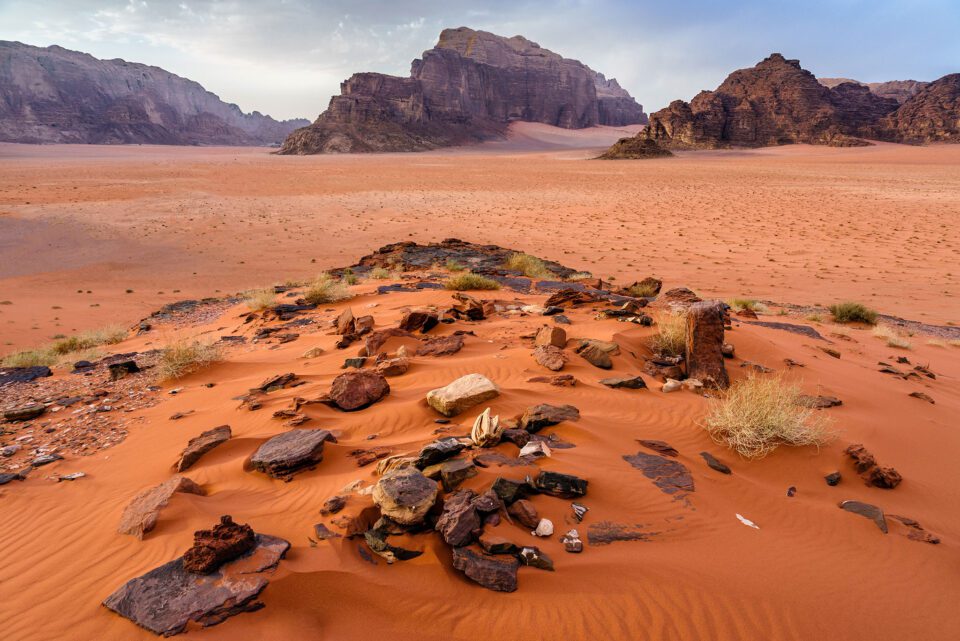
Wadi Rum, Jordan
ILCE-7R + FE 24-240mm F3.5-6.3 OSS @ 24mm, ISO 160, 1/60, f/8.0
3) Learn Some Key Words in Local Language
No matter where you go, knowing a few words here and there will help you to get around and also potentially keep you safe. Locals often love when tourists speak their language or at least try their best to. If the country you are visiting does not speak English, keep a small pocket dictionary with you to help you get around. Preferably, learn a few key words such as “hello”, “bye”, “yes”, “no”, “how much”, etc. Knowing greeting words is very important no matter where you go and will definitely be beneficial. For example, when traveling in the Middle East, saying “Assalamu Aleykum” (Peace be unto you) will immediately trigger a response “Wa Aleykum Assalam” (And unto you, peace) and you can be sure that the other person will listen to what you have to say, especially if you do it with a smile on your face. And when you don’t want something, knowing to say “Lah” (No) in Arabic will help a great deal, especially if someone is trying to sell you something and you don’t want it. The same goes for all other countries and languages – learn the basics and practice when you are on the streets. It will pay off.

Wadi Rum, Jordan
NIKON D750 + 15-30mm f/2.8 @ 15mm, ISO 100, 1/25, f/11.0
4) Secure Your Wallet and Documents First
Always secure your wallet and your documents first. Without those, you have no money and you have no way to get back home. This means that you should not be carrying these in a camera bag or some other accessory that can be easily stolen. Personally, I always try to keep my passport away from my wallet, so that if one is stolen or lost, I still have the other. When traveling overseas, I try my best to check in a good hotel or apartment that offers a safe, so that I can leave my passport and some valuables there. If local police or security demands to see a passport, you can always say that you left it in your hotel room and present some sort of an ID instead (I always have my driver’s license in my wallet). I never carry too much cash on me and prefer using my credit card whenever possible, as it reduces chance for theft. And if my wallet gets stolen, all I have to do is cancel my credit cards.
The last thing you want to lose is your passport, so always make sure to keep it in a safe place, especially before you get to your place of stay. Thieves typically don’t care for your passport, so if they find it, they most likely won’t take it. However, if your bag of valuables contains your passport, you are surely not getting it back.
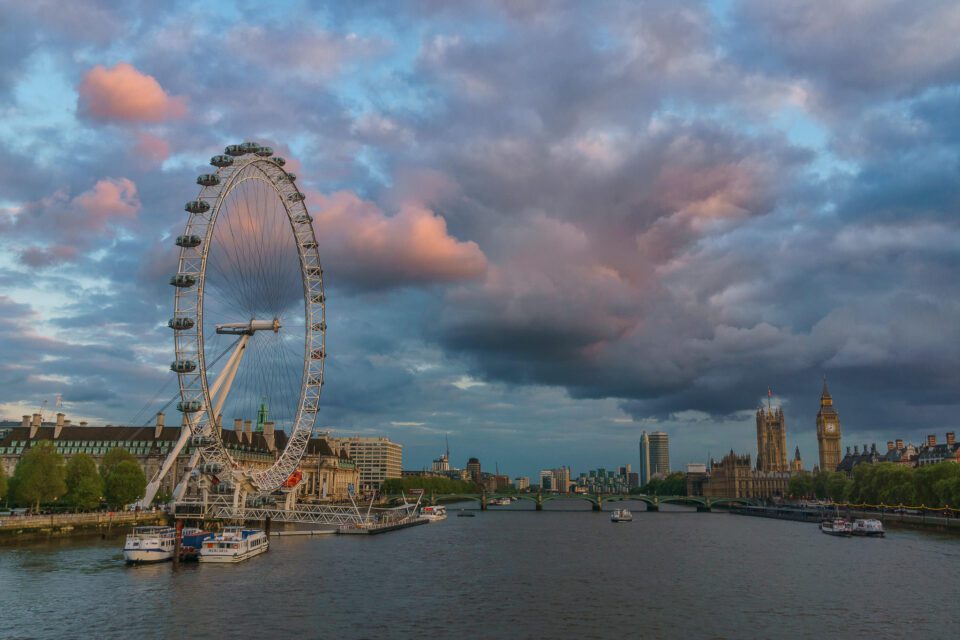
London Eye, London
ILCE-6000 + E 16-70mm F4 ZA OSS @ 20mm, ISO 200, 1/80, f/8.0
5) Best Place to Keep Your Wallet
When traveling, never leave your wallet anywhere, especially on top of a table while dining outdoors. Unless you are sure of your surroundings, it is always best to keep your wallet in your pockets, even if that gives you slight discomfort. As for pockets, the best place to keep your wallet is your front pockets. It is not a good idea to place your wallet in your rear pocket and definitely not a good idea to leave it in your jacket pockets, since those are easy to pickpocket from, especially on busy trains and buses (see keeping distance notes below). Also, make sure that your front pockets are not too wide – if one can slide their fingers into your pocket and fetch your wallet without you feeling anything, you are in trouble – time to get a new pair of pants!
When carrying a backpack, you can keep your wallet in your rear pocket, because it is not going to be visible and the backpack is going to sit over the pocket, making it difficult to access to a thief. When not using a backpack though, it is always best to carry your wallet in your front pocket as I have already pointed out above. Fanny packs are a horrible idea – they are always the top targets for thieves, so avoid those as much as possible.
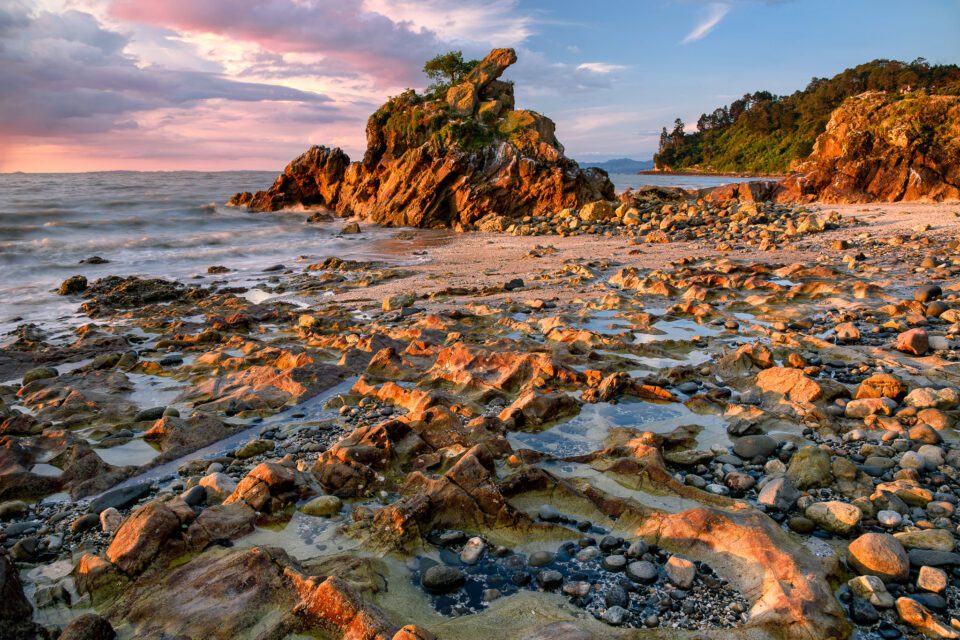
Sunset near Thames, New Zealand
6) Keep Cash Away from Your Wallet
When traveling, I always keep the little cash I have in one pocket, while my wallet with my credit cards is in another pocket. If I get mugged and the mugger demands my wallet, I can easily hand it to them without losing my cash. Also, when paying for anything, I find it better not to pull out a wallet in the first place. Speaking of my wallet, before each trip, I remove most of the contents from my wallet and keep it super clean – one or two credit cards and my ID will typically be it. I keep the cash compartment clean and use it only to store receipts.
7) Travel Light and Cheap
Many of us tend to stuff our bags with all kinds of goodies – from high-end laptops and expensive cameras, to heavy pro-grade lenses and accessories. When traveling internationally, try to keep your gear to the minimum. Don’t take a high-end laptop and instead, bring a lightweight compact laptop that you can use to do quick image backup and maybe some post-processing. Instead of taking a high-end medium format or full-frame digital camera with a bunch of pro-grade f/2.8 lenses, why not bring a 2-3 lens compact mirrorless kit? Leave your 24-70mm f/2.8 and 70-200mm f/2.8 lenses behind and bring either a set of lightweight primes, or more versatile zoom lenses like 24-120mm f/4 and 70-300mm telephoto, or a superzoom, so that you can get the shots you need without all the heft, size and price. Personally, unless I have a specific project in mind, I never travel with more than 3 lenses total (two of which are typically lightweight primes).

That’s too much heavy gear for international travel!
This way, if your gear gets stolen or you get mugged, at least you did not lose much and it will be easier to recover. Plus, carrying less gear will be good on your back and your neck.
Check out this video of an American tourist getting his 70-200mm f/2.8 stolen while it was mounted on his camera:
It is a pretty crazy video – everything happened so fast that the poor guy did not know what to do. By the time he realized that his 70-200mm was gone, it was already too late. He was masterfully distracted and touched from all sides and he could not be in control of the situation.
8) Keep Your Distance
Speaking of which, it is important to know how to keep your distance to avoid a similar situation as in the above video. When traveling in busy countries such as Spain, Portugal, France and former Soviet Union republics, where pickpockets are often very common, if you happen to carry expensive gear with you, either avoid mass transportation completely, or learn how to keep your gear close, while keeping yourself away from other people. If anyone approaches you too closely, always move back and avoid getting surrounded by anyone. If it does happen to you, keep your hands out and rotate your body in all directions to avoid contact while shouting “No”. If things don’t get better, start running towards more people.
If you end up in a busy area or happen to be traveling shoulder to shoulder, either wear your backpack in the front, or put it in between your legs, while putting one of your legs through one of the straps. Keep one of your hands in your pocket where your wallet is, while always keeping the backpack close to your body. Avoid conversations with strangers that were not initiated by you.
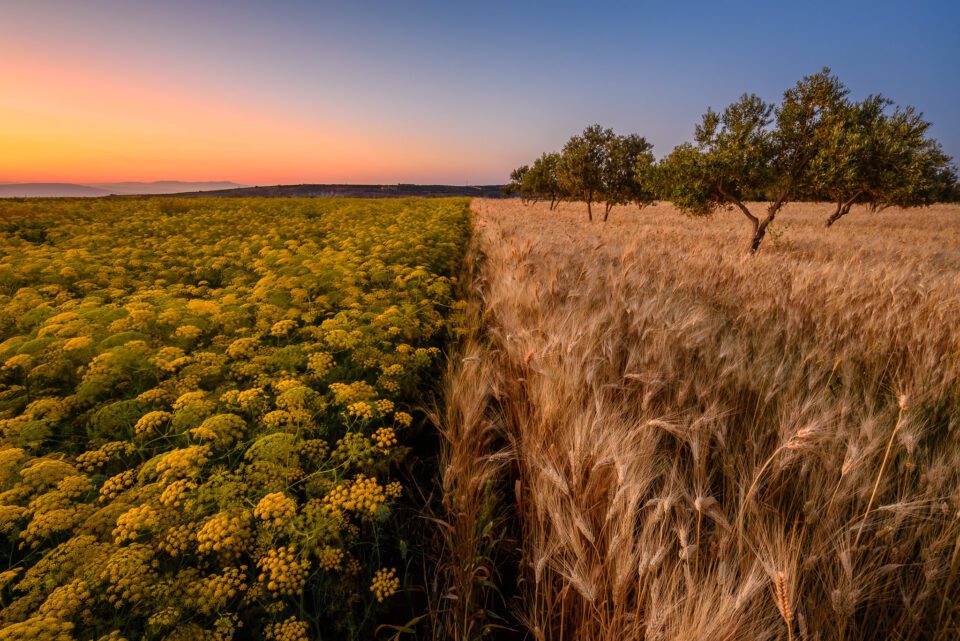
Sunset near Ajloun, Jordan
NIKON D750 + 15-30mm f/2.8 @ 15mm, ISO 200, 5/1, f/16.0
9) Travel with a Partner / Friend
Ideally, travel with at least one more person – the chances of getting mugged or taken advantage of are far less when you are accompanied by a friend, partner, sibling or another photographer. It is a good idea to be with someone who has some travel experience and if you can find a local who you can fully trust, it would be ideal. As you can see from the above video, the photographer was not alone – the lady in the blue coat is probably his wife, but she could do nothing in that situation and she was disoriented by what was going on herself.
10) Never Leave Your Gear Anywhere
When traveling, a rule of thumb is never to leave your gear anywhere, even temporarily. If you need to grab a quick shot and you need to pull out your camera from your backpack, once you have the camera out, either put the backpack back on, or put it temporarily between your legs while you are taking a picture. Always make sure to look around before you decide to take a picture – avoid being in crowded places and make sure that you keep your distance as recommended earlier, so that a thief cannot easily approach you while you are busy getting your camera in and out of your bag.
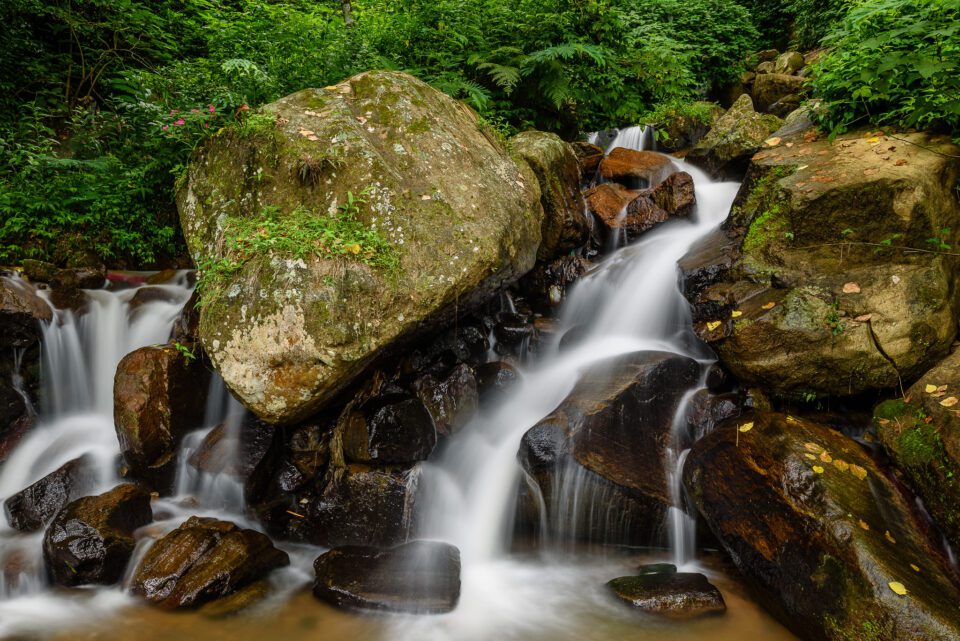
Waterfall near Nuwara Eliya, Sri Lanka
NIKON D750 + 24mm f/1.4 @ 24mm, ISO 50, 5/1, f/11.0
11) Leave Some Equipment in Your Hotel
When traveling overseas, you will be taking all kinds of accessories with you – everything from a travel adapter to cleaning tissues for your lenses. Instead of carrying all that gear with you, why not leave some of it in your hotel room? Even when taking 2-3 lenses with me on a trip, I often end up leaving my laptop and all the travel accessories, along with one or two of the lenses in my hotel room. If you are not confident about hotel room or apartment security, try not to leave too much expensive gear in a single location – you can often hide certain valuables in different locations.
12) Conceal Camera Brand and Model
Camera thieves are getting smarter every day. If they see a high-end Leica, they often know that it is worth more than an entry-level Nikon DSLR. If you are planning to bring any high-end gear, I would recommend to conceal the camera brand. You can use black / gaffer tape to hide that the red logo and once you are back, you can easily remove it.
If you still have that neck-cutting OEM strap that screams something like “Nikon D810” in gold letters on it, you might want to get it replaced with something more comfortable that does not give away the model of your camera.
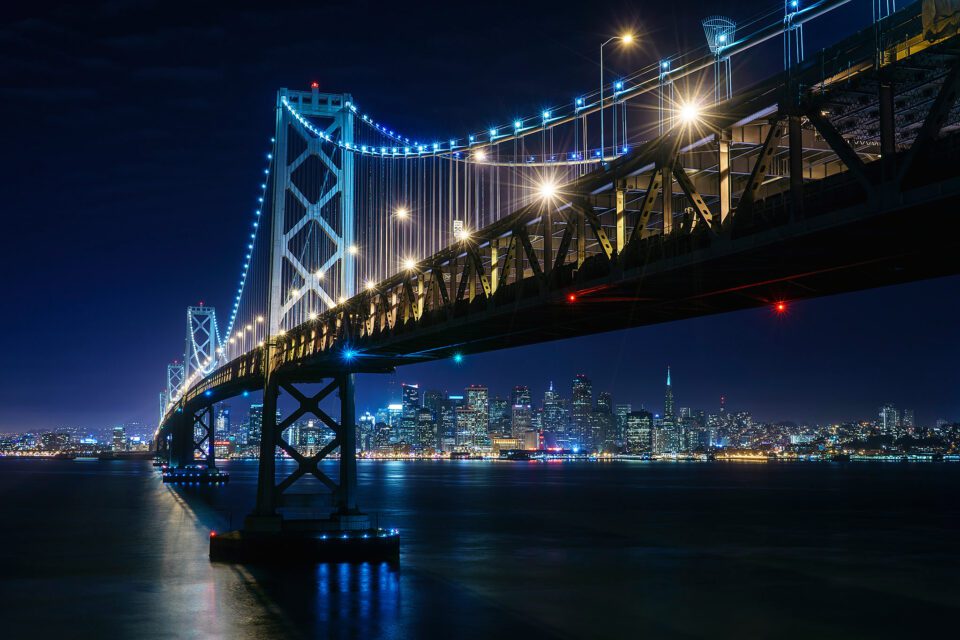
Bay Bridge at Night, San Francisco
ILCE-7M2 + FE 24-70mm F4 ZA OSS @ 41mm, ISO 100, 15/1, f/8.0
13) Transportation and Rental Car Considerations
When I was traveling in San Francisco last year, I parked my car in a shady area that was fairly close to the restaurant I wanted to dine in. I had a lot of valuable equipment in the trunk, because we were busy filming a video, so I had a few Pelican cases there with many cameras, lenses and accessories. I parked my car and walked away to pretend like I was leaving the area. As soon as I turned to another street and disappeared from the view, I stopped and waited for about a minute before glancing at my car again. In no time, two men appeared out of nowhere – one was leaning on the car, while the other was behind it, ready to get the action going. As soon as I saw that, I returned to my car, unlocked it and drove off. I found another restaurant further away where I could park my car safely within my sight later that day and I am glad that I did, because I know that those two guys were about to hit it.
13.1) Rental Car Identification
When renting a car overseas, you have to be extra careful about how you are planning to utilize the vehicle and whether you will be leaving any valuables behind. Ideally, you do not want to be leaving any valuables in the rented car and if you do, it is best to keep the car at your sight. Make sure nothing on the car identifies it as a rental car. Unfortunately, rental cars often have different tags or have bar codes next to rear license plates that show them as rentals. Thieves know very well how to identify rental cars and know that they might contain valuables, so if the car you rented has such a tag or bar code, it is best to not leave any valuables behind.
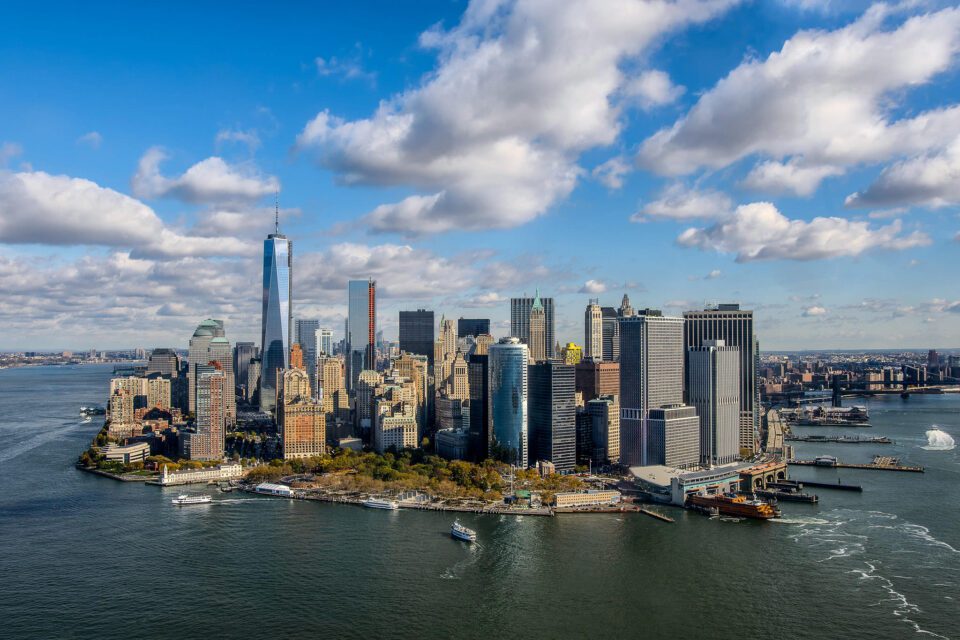
New York Skyline, New York
NIKON D800E + 18-35mm f/1.8 @ 20mm, ISO 100, 1/800, f/5.6
13.2) Locking Valuables
If you have several cases of bags that might contain equipment, make sure to cable lock all of them together in the trunk of the car. This way, if a thief wants to steal a bag, they will need to find a way to carry everything or have the tools to cut off the bags. Since car theft is something that happens very quickly, thieves want to be able to run quickly with whatever they can and they are not going to try to run with several interconnected bags / cases. Never leave anything in plain sight – not even a GPS device or its charger.
13.3) Make the Car Appear Local
It is a good idea to put a local newspaper on the dashboard to give the car a local appearance. Get rid of all other objects in the car that might make it look like you are a tourist. This will greatly diminish the chance of car theft.
13.4) Always Carry the Critical
When moving between hotels and airports, always carry the critical items such as your camera, lenses, laptop and charges in your backpack that you have with you. Put a lock on zipper pulls so that pickpockets can’t unzip and steal the contents. This way, if your car is broken into, your gear stays safe with you. As stated above, make sure that you do not put your wallet and your passport in the same backpack – always have those with you in your pockets.
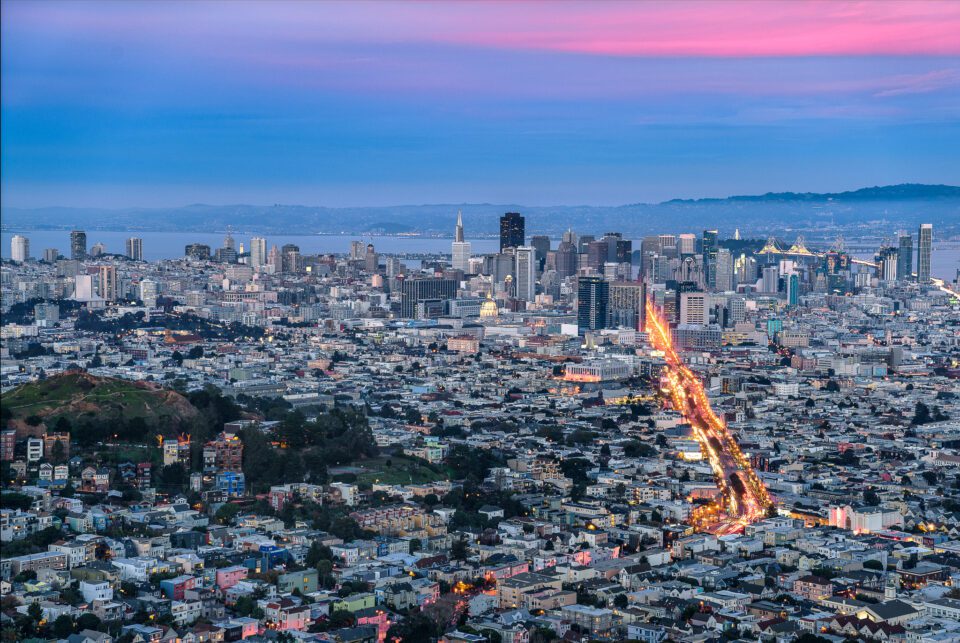
Twin Peaks, San Francisco
ILCE-7M2 + FE 24-70mm F4 ZA OSS @ 70mm, ISO 100, 1/6, f/5.6
14) Always Have a Proper Backup Plan
As I previously explained in my article on understanding memory cards and care for them, I avoid formatting memory cards when traveling, because that’s where I keep my first backup. After a memory card gets full, I simply turn it over in my memory card holder and keep it that way until I get home, while keeping another backup of my images in my laptop. Make sure that you not only have a proper backup plan when traveling, but also make sure that you have several backups, preferably in separate backup locations. When traveling between sites or going home, I always separate my memory card cases from my backpack and laptop. For example, during my recent trip to Turkey and Israel, I intentionally put my memory card case in between my clothes in checked luggage, while keeping my laptop in my backpack. If one got stolen, my images would still be in another bag.
15) Keep Serial Numbers in Your Wallet and Phone
If things go south and your gear gets stolen, it is always best to have serial numbers of each lens and camera with you, so that you can report that information to local police. Don’t just write down numbers, but make sure to take pictures of each camera gear with your smartphone (and email them to yourself beforehand), so that you can present the information and proof when needed.

The Ancient Walls, Jerusalem
GFX 50S + GF63mmF2.8 R WR @ 63mm, ISO 100, 1/160, f/5.6
16) Check Airline Regulations
Make sure to check airline regulations for allowed camera bag sizes and weights. You definitely do not want to get a bag that is too big or too heavy to take into the cabin – avoid getting your camera gear bag checked, since you risk getting your camera gear damaged and potentially stolen. While most international flights have no problems with most luggage sizes, domestic flights can be very problematic. When traveling in Israel, I was instructed to keep my camera bag under 5 kg for domestic flights, which was extremely limiting in terms of what I could take with me. Gladly, I found out that I could pay to have a heavier bag, although while flying domestically nobody even cared to weigh my camera bag, so it did not turn out to be a problem. Still, I made sure to keep my bag relatively lightweight, just in case. To avoid any surprises, always make sure to check bag size and weight requirements and be at the gate early enough, so that you can get into your seat before others – if overhead space gets full, you might be forced to check your bag.

Colorful Lupines of South Island, New Zealand
X-T2 + XF10-24mmF4 R OIS @ 18.2mm, ISO 200, 1/50, f/11.0
17) Check Your Insurance Policy
If you are traveling with expensive gear, it is always a good idea to have it insured in case anything happens. While you might have an insurance policy against theft, did you actually bother to read all the insurance terms and make sure that you will be protected in case it is stolen? Tom Redd wrote an article a while ago titled “do you have insurance for photography equipment?”, where he brought up a potential problem with an insurance company refusing to pay out a person who had his gear stolen after they found out that he advertised prints of his work for sale in the past. Since his insurance was under his homeowner policy, the company rejected the claim on the basis of his gear no longer being “personal” property, as it had been used for commercial purposes.
Make sure to actually read your insurance policy and ask all the necessary questions to make sure that you are fully covered. If you sell prints or use your camera gear for any client work, make sure that your policy covers that. If you are a working pro, you will most likely will a separate business insurance and pay higher premiums.
Europe Travel Tips: 50 Things You Should Know Before Going to Europe

Europe is my favorite place to travel. Despite having traveled extensively around the world, it’s still the place I return to again and again. We travel Europe at least once a year, and even lived there for an entire year!
But you don’t have to stay for an entire year to get a feel for this amazing continent. Even just one week in Europe at any of these incredible destinations is enough to make you fall in love!
There are so many incredible places to go in Europe with so many different countries and cultures to explore without actually traveling very far! Traveling through Europe can seem a little overwhelming if you’ve never been before, so I wanted to share a few things you should know before going to Europe. This will make your first visit much more enjoyable.
If you’re traveling with kids, be sure to read these 10 tips for taking kids to Europe.
1. Budget for Your Trip
Before you even purchase tickets to Europe, sit down, like a responsible adult, and plan a budget for your trip to Europe. Make sure it’s realistic and make sure it’s something that you can afford right now. While I love to rack up credit card points by using them on travel, it’s important to be reasonable. The good news is that Europe can be done fairly inexpensively, in fact, we actually spent less money traveling Europe for a year than we did staying home!
How much does it cost to travel Europe?
That answer really depends on how many people are in your party, what style of travel you like, and how budget you’re willing to go. You can travel Europe cheap if you’re smart about it, but I would plan on $1,000/person for each week just to be safe.
The cheapest way to travel Europe is to plan ahead and shop around for the best deals on accommodation, transportation, and airfare because there are tons of Europe travel deals out there on the internet! If you want to know how to travel Europe cheap, you can read about how we actually spend less money living there for a year than we did at home.
Be sure to read my guide to planning financially for a vacation, which includes a Europe travel budget calculator so that you can find out just how much your trip will cost.
 2. Save for Your Trip
2. Save for Your Trip
Now that you have your budget set in place for visiting Europe you can start saving! These are some easy ways that I save money for travel. You don’t need to turn over your whole paycheck, but you’ll need to make saving for travel a priority so you don’t go into crazy debt to be able to afford it. Credit cards definitely have their place and can be useful for earning points, but be sure you pay it off each month! If you can’t afford to do so, maybe don’t spend it. This is why having a travel fund is so important. When those travel deals pop up you’ll be ready to jump with your special savings!
3. Check Europe Travel Visa Requirements
Americans traveling to Europe won’t need a Visa to travel to most countries on the continent. Europe travel visas are a little complicated, but you can learn more about them here. If you’re looking to stay in Europe for more than 90 days, read this.
Beginning in 2023, US citizens and citizens of other previously non-visa countries coming to the EU will now need a ETIAS Visa. Read here for what that means for you.

4. Buy Flights Early
You can usually get the best deals to Europe by booking early. Start keeping an eye out for cheap flights as early as possible. Read my guide to finding cheap flights to be sure you’re getting the best deals!
5. Read Books About your Destinations
Once you decide where you’re going in Europe, find books to read about it. I don’t mean guide books, although those can be great. I love these ones. I mean books, both fiction and nonfiction, that tell a story set in Europe. It can make your trip so much more meaningful when you have some connections.
You can read this awesome list of 100+ books organized by continent that will inspire you to travel.
6. Pack Light
Pack light, especially if you’ll be traveling around Europe and taking public transportation. There’s nothing more frustrating than trying to haul heavy luggage around on trains! I promise!
Make a packing list, then take less than you think you’ll need. If you’re going to Europe for more than one week, pack for one week, then plan on washing and/or re-wearing what you’ve brought. There’s nothing shameful about washing your laundry in a tub or sink or even spending some time with the locals at the laundromat! It could be an adventure!
If you want to wash your own clothes more efficiently, consider getting one of these awesome laundry wash bags that make laundry day way easier and more fun!
7. Bring Melatonin to Beat Jetlag
Consult your doctor before taking any medication. I am not a doctor, but this is what works for me. I buy the gummy melatonin (because I have kids) and take it with me every time I travel. Sleeping in a new bed is hard enough, but add a 6 hour time difference once you’re in Europe and it’s all over! When you’re ready for bed, take about 3-10 mg of melatonin which will help you shift your internal clock. Melatonin is an over the counter sleep aid and can be purchased at any drug store or grocery store. I really like this one because it tastes delicious and is 5mg (a good amount for adults) and this one for kids or smaller people since it’s only 2.5 mg (which is hard to find in stores).
Be sure to pull down the shades and make it as dark as possible. I like to use this amazing eye mask to achieve complete darkness! I love that it leaves space for your eyelashes, which is a huge selling point for me! And yes, it does look like a bra for your eyes!

8. Don’t Try to See it All!
This is probably one of my best Europe travel tips! T raveling to Europe for the first time will be so exciting and you’re going to want to see as much as you can. Europe is filled with so many bucket list destinations screaming to be visited! Unless you’re staying in Europe for a year, don’t try to see it all in one trip! Europe is huge and each country is so different. Just one city could honestly keep you busy for a lifetime!
Even though it’s so easy to travel around Europe, don’t spend all of your time on a train, plane or car! Plus, just more reasons to come back right?! I would stick to 2-3 cities in one visit depending on the length of your trip. The best way to travel Europe is slowly! Take your time, you can always come back.
If you only have one week, these 20 One-Week Europe Trip Itinerary Ideas will help you decide which cities to visit.
Source https://www.popphoto.com/how-to/how-to-protect-camera-gear-theft/
Source https://photographylife.com/keeping-camera-gear-safe-when-traveling
Source https://wanderlustcrew.com/europe-travel-tips/
